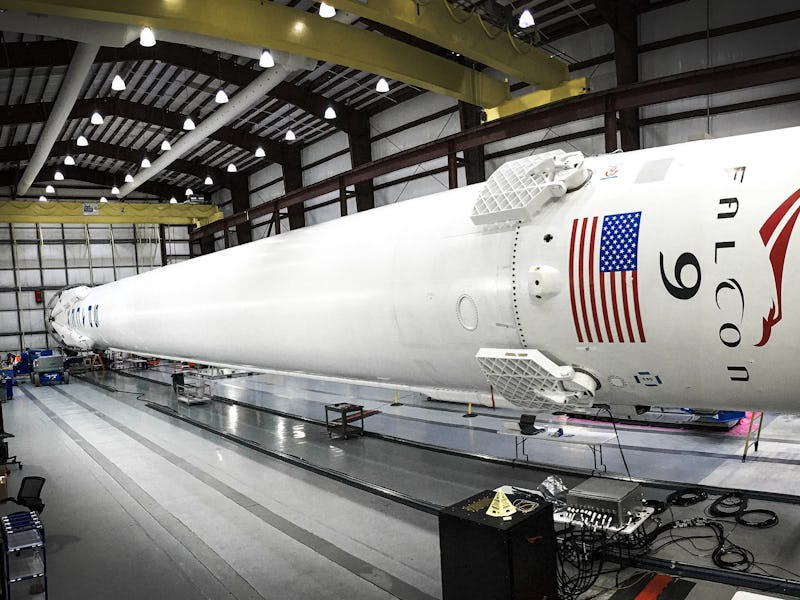SpaceX may be about to reuse a Falcon 9 first stage booster for its third launch, the first time a booster has been used more than twice for missions. A Tuesday report claims the feat may be achieved with a launch scheduled for no earlier than November 19.
The move, as reported by Teslarati, would be a major move in the race to make spaceflight affordable, paving the way for a future mission to Mars. The SSO-A launch will send up 74 or fewer small satellites, collected together by third party Spaceflight Industries and weighing around 4,000 kg in total. The stack has moved 1,075 miles from Seattle as part of a convoy, where it will travel another 357 miles to reach the Vandenberg Air Force Base in California, the site of SpaceX’s new west coast landing pad. The booster could become the second launch to use the new land-based pad.
The convoy on approach.
See more: The New Goal for SpaceX: 24-Hour Reflight
The report notes that SpaceX is likely to use either the B1048 or B1046 booster, both of which employ the highly-reusable “Block 5” design. The former previously flew on the July 25 Iridium NEXT-7 mission and the October 8 SAOCOM 1A mission. The latter was the first-ever “Block 5” to fly in a public mission, on May 11 with the Bangabandhu-1 launch, subsequently flying again on August 7 with the Merah Putih launch.
The SSO-A launch could prove the resilience of the “Block 5” and pave the way for more ambitious launches. CEO Elon Musk has previously stated his goal is to use one booster for a flight, land it, refuel it and send it up again within 24 hours, reaching a state where it offers “true operational reusability, like an aircraft.” The Block 5 is expected to serve 10 launches per booster with minor checks, and 100 launches with refurbishments. It would save some of the estimated $62 million costs associated with building a Falcon 9.
Before the big launch, SpaceX is expected to fly the Es’hail 2 mission no earlier than November 14. The mission will provide internet and television services for Qatar and surrounding countries. It’s expected to lift off from the Cape Canaveral pad in Florida, on the opposite side of the country.
